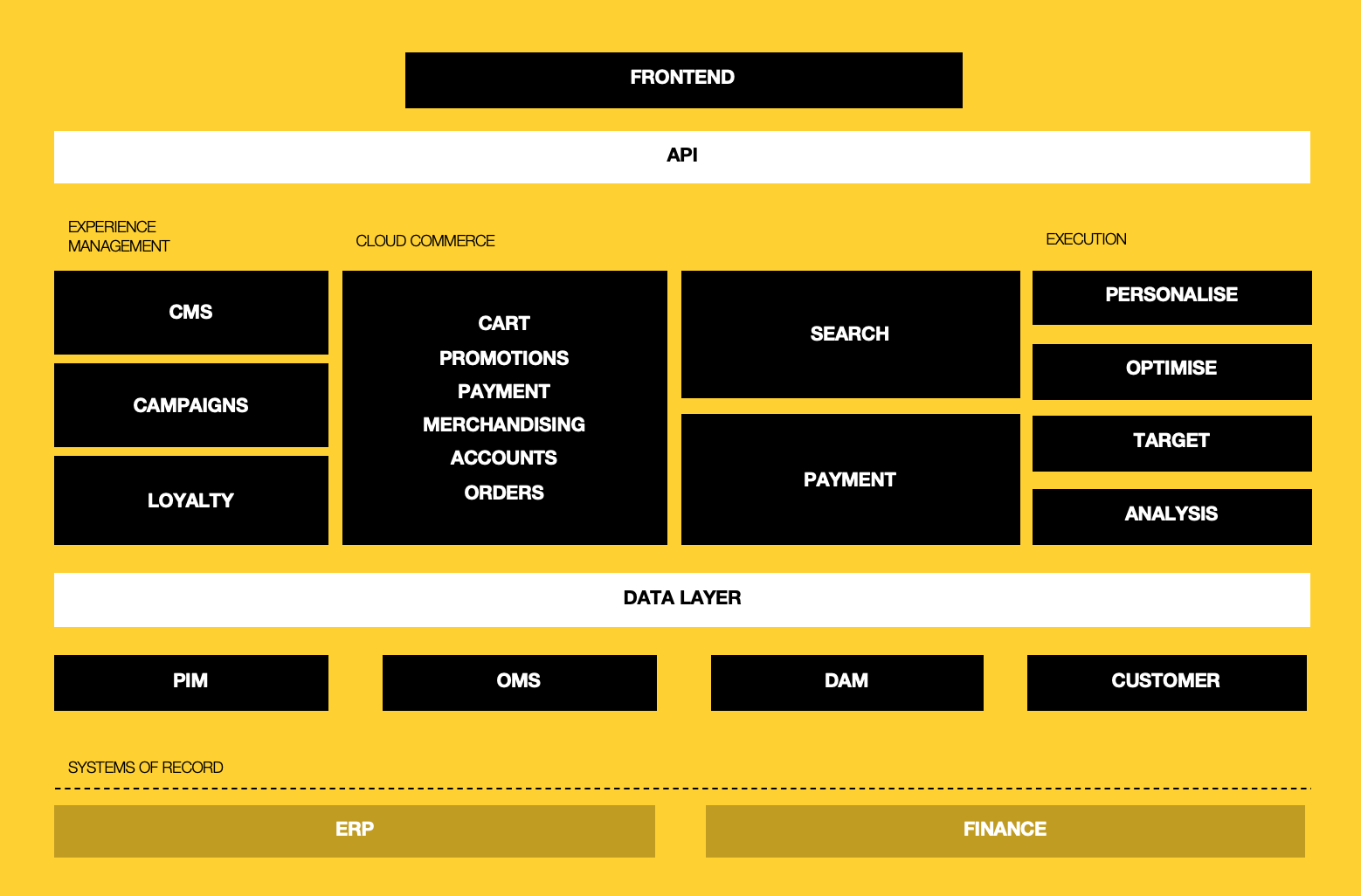Build vs buy: e-commerce platforms

Build what’s unique to your business. Buy everything else.
Most e-commerce teams should buy every tool that assists in the online shopping experience. This includes
- E-commerce platform
- CMS
- Hosting
- Customer support functionality
- Payment processing
- CRM and marketing automation
- Transactional emails/SMS
- Search functionality
- Inventory management
- Shipment tracking
It doesn’t make sense for a clothing brand to build custom applications. Rather, your teams should be focusing on your core capabilities—clothing.
What’s unique to a clothing brand might be the way that users experience and engage with your clothes online. This experience is what you should focus on differentiating via custom builds. For other businesses, there might be unique data used in a proprietary way (membership purchases, for example).
Always build your e-commerce frontend
In an e-commerce environment, you should always own your brand’s UX/UI logic, how users interact with your products, and user data.
The front end of your e-commerce store should be somewhat isolated from third-party platforms. Instead, it should be connected via API.
This ownership and flexibility is one reason headless e-commerce solutions are gaining popularity. By using an API instead of relying on an e-commerce platform’s design tools and database, you can better control vendors, and swap them out if you need to.

Image courtesy of Mach Alliance
User-facing benefits
By owning your own user experience, you untether yourself from the restraints of traditional e-commerce websites.
A traditional e-commerce website might be something like Amazon, featuring product images next to a product description, and then an “add to cart” button. This standard e-commerce experience is fine in some instances, but as online shopping becomes more important, brands have the opportunity to offer something better.
A perfect example is Google’s store. Check out Google’s Pixel 6a page. It’s so much more than an image-and-description interface.
An out-of-the-box platform cannot create this kind of e-commerce experience. It requires knowledge of the product itself, what users care about, exceptional UX/UI, and custom frontend development.
But it’s worth it. It immerses users in the functionality of its product. It shows–not tells–what makes a Pixel 6a unique.
Internal benefits
By owning how your store interacts with users, you can easily swap vendors in and out, avoiding lock-in and having the flexibility to change/upgrade when needed.
Your marketing or e-commerce team can also conduct more testing and tweak the shopping experience for the user. This freedom doesn’t exist within e-commerce platforms alone.
Proactive teams with the ability to give users a better e-commerce experience? That’s the kind of resiliency top brands need in today’s digital landscape.
More Insights?
View all InsightsQuestions?
Global SVP Technology & Engineering





